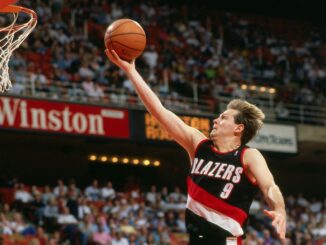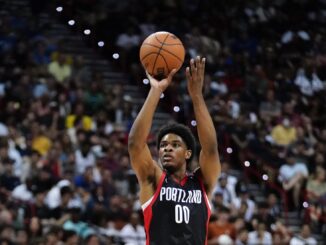
We’re into Week 2 of the NBA bubble and the Portland Trail Blazers are still in the hunt for the Western Conference’s 8th seed.
One thing has become apparent for the Trail Blazers: Gary Trent Jr. will play an integral part in this team’s success the rest of the way and into the 2020-21 season.
The second-year shooting guard was a part of a star-studded group at Duke that included Marvin Bagley and Wendell Carter. He left after his freshman season but slipped to the second round of the NBA draft due to questions about his athleticism. He found his way to the Blazers by way of a draft-day trade and has carved out a role on the team with his knock-down shooting. This comes as no surprise when you look at his college stats, as he shot 40% for the Blue Devils.
Two of the biggest revelations with Trent this season is that Terry Stotts has shown a level of trust, giving him consistent minutes, and he knows who he is as a player—a dead-eye shooter. The minutes-uptick initially came by way of the Blazers being bludgeoned by injuries and a lack of reliable wings. What’s not necessarily talked about is how Trent Jr. essentially took the minutes many Blazers fans expected to see from Anfernee Simons.
If you look at his minutes breakdown from December to March and the first three bubble games, Trent starts out playing 9 minutes and has ballooned to 35 minutes against the Houston Rockets on Tuesday night. The average minutes per game from February to the most recent game is roughly 26 minutes—a far cry from the 8 mpg he was seeing in November and December.
My favorite part of Gary Trent Jr.’s game is his high level of self-awareness on the court. He was a pure shooter in college, and it’s transferred over into the NBA. He’s shot at 40% or just a shade under throughout the season, and that mark is highlighted because it’s looked at as the benchmark for a good three-point shooter in the NBA.
Moreover, roughly all of his shots are taken from behind the arc. The Blazers’ offense is built around iso sets and there’s a necessity for spacing and making the defense pay when they help on ball defenders, which he does consistently. His additional skill sets he may possess aren’t necessarily needed with the professional shot-makers of Lillard and McCollum in the backcourt. There’s also his effort on the defensive end. His 6’6 frame accompanied with his high energy allows him to play with the smaller backcourt of Dame and CJ.
The future looks bright for Trent and the Blazers together, as they have him on a team-friendly 3-year deal that doesn’t expire until the 2021-22 season.




